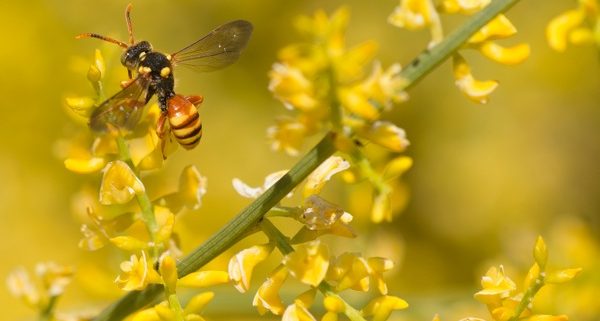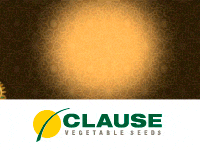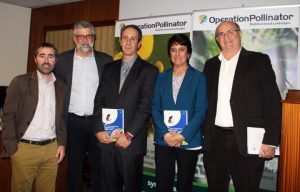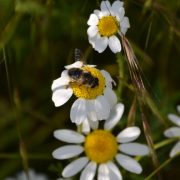Syngenta presents the most complete guide pollinators Spain
The “Field Guide of pollinators in Spain”, published by Mundiprensa, has already been described as the most comprehensive guide pollination and pollinators in Europe. Its authors are renowned experts Luis Oscar Aguado, Elisa and Alberto Viñuela Fereres. Syngenta has presented the guide in Madrid, in a ceremony, which was also known its new website dedicated to pollinators: www.operacionpolinizador.es
By closing December Syngenta has presented at the headquarters of the CSIC in Madrid (Spain) the “Field Guide pollinators of Spain” written by entomologist Luis Oscar Aguado, with Elisa Viñuela, Professor of Entomology ETSIA Madrid ( UPM) and Alberto Fereres, CSIC Research Professor. This guide, published by Munidprensa and sponsored by Syngenta, is a must to understand in detail the Spanish pollinators and their essential role in the environmental balance document.
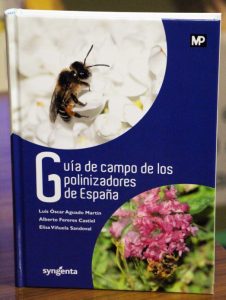 In this sense, Pablo Vargas, the Royal Botanical Garden of Madrid, described the work as “guide pollination and pollinators most complete and current that has been done in Europe.” In addition, the “Field Guide pollinators Spain “won last September 44th Book Award Agricultural, award organized by Fira de Lleida under the fair of Sant Miquel and lounge Eurofruit. The award was they granted to address essential to our economy issues are the crop pollination, the importance of pollinators lonely and conservation thereof.
In this sense, Pablo Vargas, the Royal Botanical Garden of Madrid, described the work as “guide pollination and pollinators most complete and current that has been done in Europe.” In addition, the “Field Guide pollinators Spain “won last September 44th Book Award Agricultural, award organized by Fira de Lleida under the fair of Sant Miquel and lounge Eurofruit. The award was they granted to address essential to our economy issues are the crop pollination, the importance of pollinators lonely and conservation thereof.
According to its authors have highlighted in the presentation, the Guide has a clear scientific and informative character, dividing the contents into two parts: the first part the different types of wind-pollinated and zoophilous are presented, and within the zoophilic pollination explained in what each one of them with some examples and photos. Subsequently it exposed as wild pollinators benefit different crops (fruit, vegetables, etc.) and benefits and influence of pollinators in maintaining the landscape and its importance for the conservation of native flora and fruit production are listed wild they will serve turn to birds and other animals for food. This first part also includes some examples of actions to assist the establishment and maintenance of pollinators.
Practical information and diagnosis is included as a key simple so that it can work with different groups of insects pollinating beetles (or beetles), Diptera (or flies), Lepidoptera (or butterflies) and Hymenoptera (social bees in the second half and lonely). Also essential information on their habitat, ecology, flowers they visit, type of nesting, as well as some pictures that may allow identification of numerous species is provided.
Total specific information of more than 600 species of insects collected and, more importantly, more than 1,000 plant-pollinator interactions are listed.
The “Field Guide pollinators of Spain” is clearly linked to the project Operation Pollinator Syngenta, which has been seven years promoting biodiversity in Europe through the establishment of multipurpose crop margins, thus promoting the emergence of pollinators . The book’s authors are contributors to this project since its inception and Syngenta accumulate a wealth of knowledge and experience in handling this type of margins and the benefits to increase biodiversity on agricultural land.
According to Germán Canomanuel said, the area of Corporate Affairs Syngenta Iberia, within achievements Good Growth Plan and more than 1,120 hectares of various crops multifunctional margins are included, demonstrating that since agriculture can work to promote biodiversity and increase the number of pollinators in our fields.
In this regard, Francisco García Green, head of Operation Pollinator Syngenta Iberia, presented the details of this project and the new website where you can learn all aspects of the same dynamic and very visual: www.operacionpolinizador.es.
Source: Syngenta Iberia




